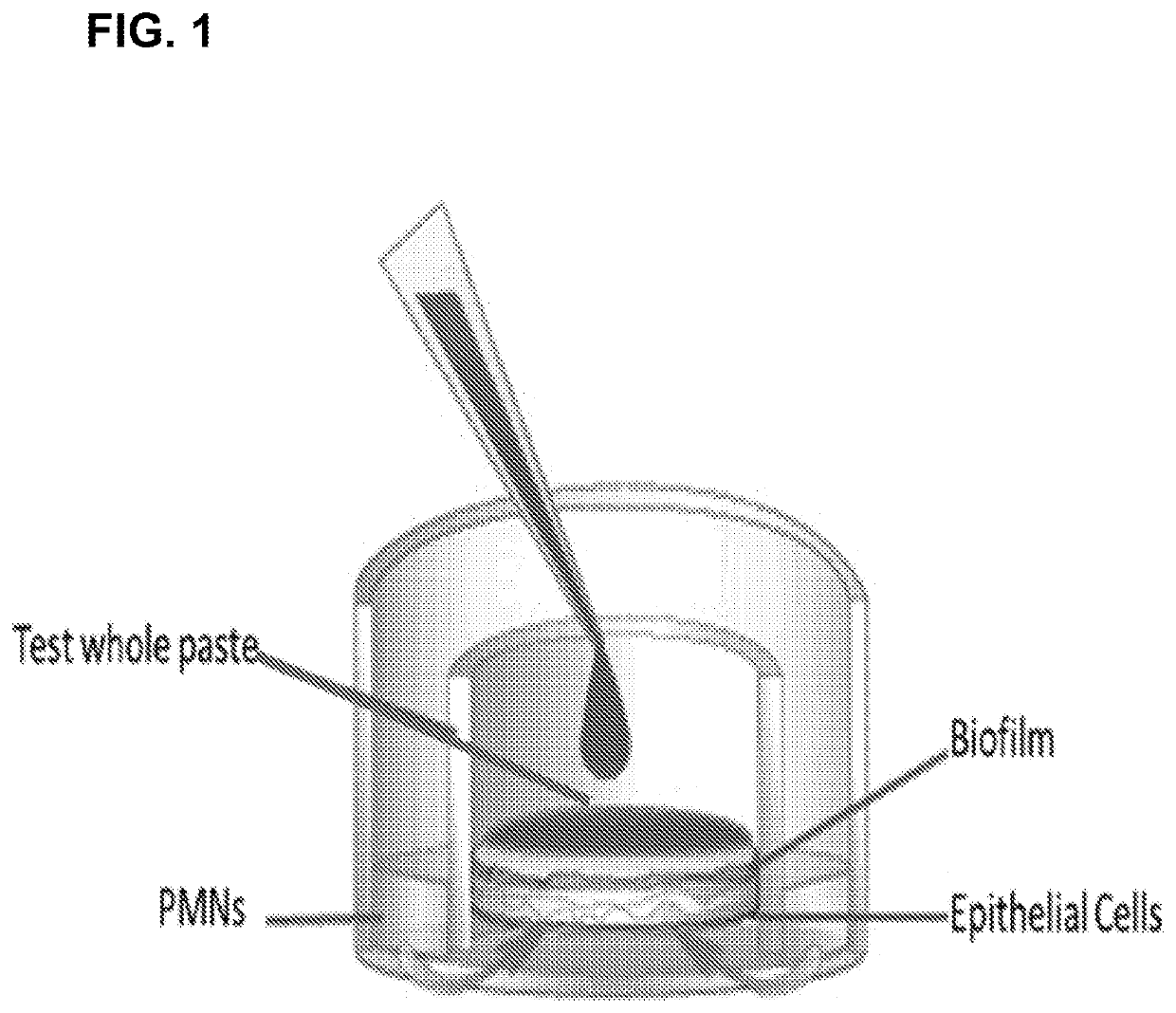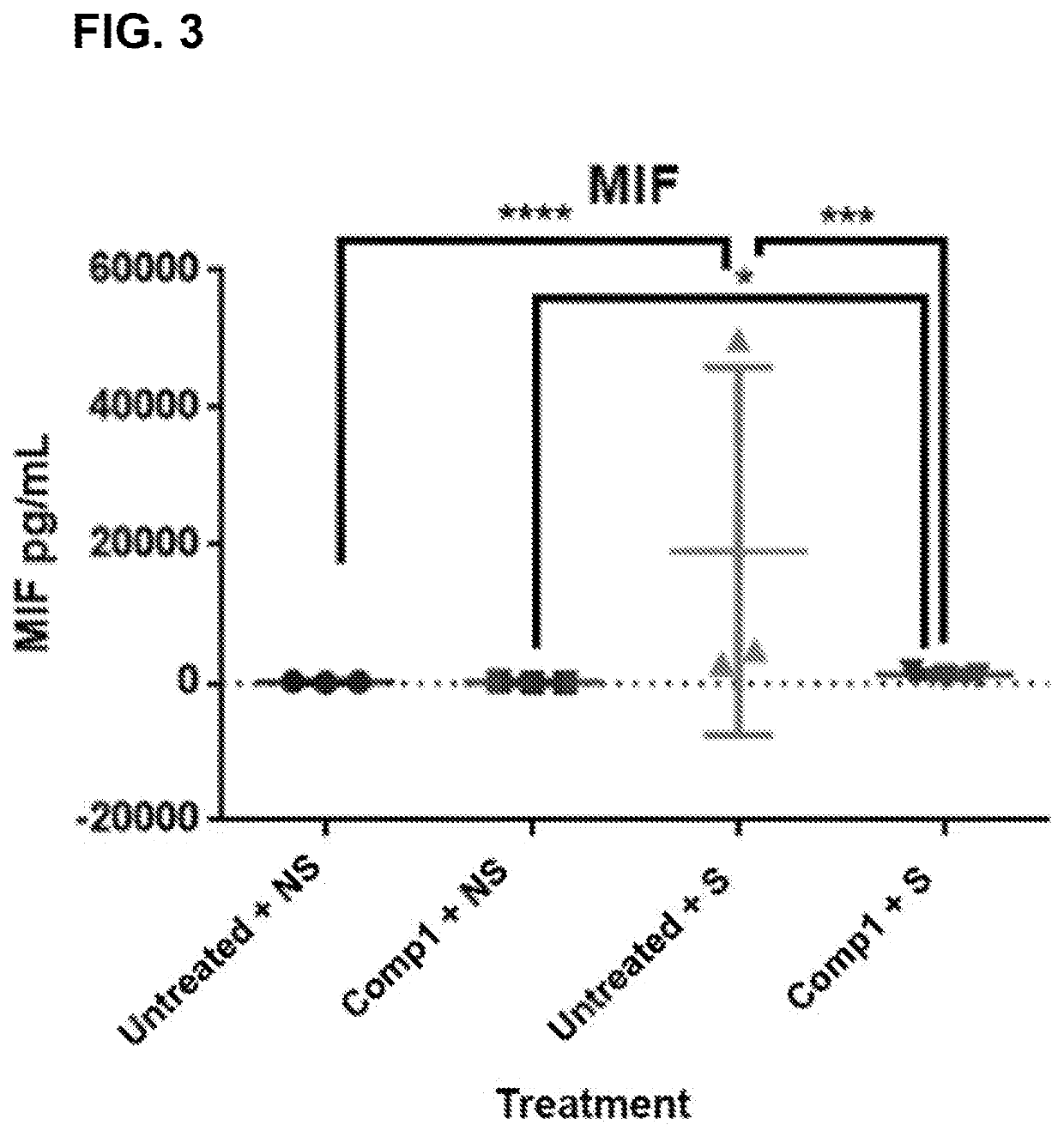Methods of Inhibiting Neutrophil Recruitment to the Gingival Crevice
- Summary
- Abstract
- Description
- Claims
- Application Information
AI Technical Summary
Benefits of technology
Problems solved by technology
Method used
Image
Examples
example 1
[0052]FIG. 1 contains an illustration of the Gingival Crevice Model (GCM). The GCM is useful to assess product health benefits in a cell culture model that closely mimics a gingival crevice. The gingival crevice is home to hundreds of bacterial species along with gingival epithelial cells and neutrophils. Proteomics of secreted or expressed proteins, bacterial impact and odor can be evaluated and used to compare the impact of various compounds and compositions. The GCM combines three components, neutrophil-like cells, biofilm that includes oral bacteria, and oral epithelial tissue.
[0053]Neutrophil-like cells: HL60 cells (ATCC # CCLO-240) can be induced to differentiate into a neutrophil-like cell types by contacting the HL60 cells with retinoic acid. HL60 cells are maintained at a cell density of 1×105 cells / mL (Media for HL60 IMEM ATCC #30-2005). Retinoic acid for differentiation of HL60s into neutrophil-like is prepared by dissolving retinoic acid into ETOH to produce a 1 mM solut...
example 2
[0068]Oral compositions that comprise arginine are disclosed in WO 2017 / 223292, which is incorporated herein by reference. In some embodiments, the oral care composition comprises an orally acceptable carrier, zinc phosphate; and stannous fluoride. In some embodiments, the zinc phosphate is a preformed salt of zinc phosphate. In some embodiments, the zinc phosphate is present in an amount sufficient so that the stannous fluoride dissociates to provide a therapeutically effective amount of stannous ions in aqueous solution. In some embodiments, the amount of zinc phosphate is from 0.05 to 5% by weight, relative to the weight of the oral care composition. In some embodiments, the amount of the stannous fluoride is from 0.05% to 5% by weight relative to the weight of the oral care composition. In some embodiments, the amount of the water is about 12% by weight or more, relative to the weight of the oral care composition. In some embodiments, the oral care composition further comprises ...
example 3
[0069]Oral compositions that comprise arginine are disclosed in WO 2017 / 223311, which is incorporated herein by reference. The oral care composition is an oral care composition set out in Example 2 that further comprises an organic acid buffer system. In some embodiments, the oral care composition comprises an amount of the water that is 10% by weight or more, relative to the weight of the oral care composition. In some embodiments, the organic buffer system comprises a carboxylic acid and one or more conjugate base salts thereof, for example, alkali metal salts thereof. In some embodiments, the acid is selected from citric acid, lactic acid, malic acid, maleic acid, fumaric acid, acetic acid, succinic acid, and tartaric acid. In some embodiments, the one or more conjugate base salts are independently selected from sodium and potassium salts, or combinations thereof. In some embodiments, the acid is citric acid, and the one or more conjugate base salts comprise monosodium citrate (m...
PUM
 Login to View More
Login to View More Abstract
Description
Claims
Application Information
 Login to View More
Login to View More - R&D
- Intellectual Property
- Life Sciences
- Materials
- Tech Scout
- Unparalleled Data Quality
- Higher Quality Content
- 60% Fewer Hallucinations
Browse by: Latest US Patents, China's latest patents, Technical Efficacy Thesaurus, Application Domain, Technology Topic, Popular Technical Reports.
© 2025 PatSnap. All rights reserved.Legal|Privacy policy|Modern Slavery Act Transparency Statement|Sitemap|About US| Contact US: help@patsnap.com



